Gray hairstreak on flowering elbowbush
As you heard recently, one of the earliest native plants to bloom in central Texas each year is the elbowbush, Forestiera pubescens. A few days ago you saw a crab spider on one at the Lady Bird Johnson Wildflower Center on February 3, 2013, and now from that same outing here’s a different visitor to an elbowbush, a gray hairstreak butterfly, Strymon melinus.
——–
I’m away from home. You’re welcome to leave comments, but please understand if I’m slow in responding.
© 2015 Steven Schwartzman

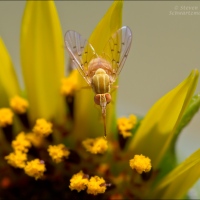
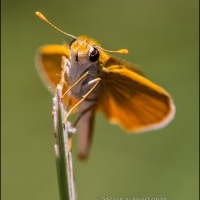
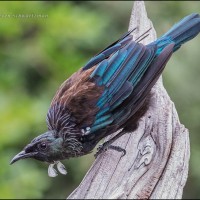
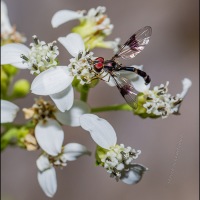
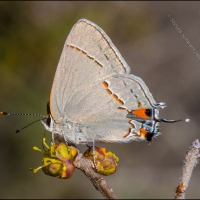
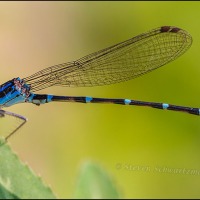

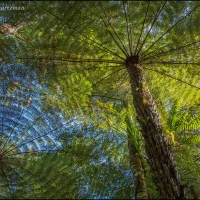
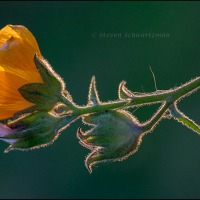
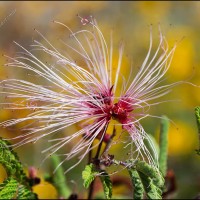
So who was the patient one … you or the butterfly or both? Beautiful, and tack sharp – just like I like ’em.
Pairodox Farm
February 8, 2015 at 9:37 AM
Yes, hairstreaks are hard to photograph…fast little guys! And skittish.
melissabluefineart
February 8, 2015 at 10:49 AM
They can be skittish, but I remember that when I started doing closeups of nature in Austin, the olive hairstreaks were pretty cooperative.
Steve Schwartzman
February 8, 2015 at 11:21 AM
Hi there Melissa … thanks for following up on this comment. I stopped by Melissabluefineart’s and was intrigued by its subheading, ‘Fine Art of Ecological Restoration’. I looked around for an ‘About’ entry that I thought might explain … but couldn’t find one. Anyway, I am left wondering about the nature of your artistic focus.
Pairodox Farm
February 8, 2015 at 12:13 PM
Oh! I didn’t realize there wasn’t anything there. Thank you for pointing that out. I’ve enjoyed visiting your blog but haven’t had time to comment before. I enjoy the intelligence of your writing.
melissabluefineart
February 9, 2015 at 10:41 PM
I’ll confess that I don’t remember the circumstances of taking this picture two years ago. Just as long as you approve of the results, we’re fine.
Steve Schwartzman
February 8, 2015 at 11:13 AM
Wow, just look at that gorgeous, fresh hairstreak! You can see the iridescence on his wings. Marvelous shot, Steve.
melissabluefineart
February 8, 2015 at 10:48 AM
Thanks, Melissa. Now if only I could iridesce as well….
Steve Schwartzman
February 8, 2015 at 11:24 AM
Fabulous! I love hairstreaks 🙂
Sarah Longes - Mirador Design
February 8, 2015 at 12:23 PM
Welcome to the club, Sarah.
Steve Schwartzman
February 9, 2015 at 3:30 AM
😀
Sarah Longes - Mirador Design
February 9, 2015 at 1:54 PM
I’ve seen hairstreaks here in Omaha in summer, too. Upon close observation, a few times, the delicate little wing appendages appeared to be moving independently. Have you seen this phenomenon too? It might have been the result of a slight breeze, but I was pretty sure…
krikitarts
February 8, 2015 at 7:08 PM
Check out what I said about that in a post last year, Gary:
https://portraitsofwildflowers.wordpress.com/2014/06/02/gray-hairstreak-butterfly-on-antelope-horns-milkweed/
Steve Schwartzman
February 9, 2015 at 3:33 AM
Thanks so much for taking the time to refer me to your other post–that is yet another truly amazing gift of nature to help to preserve the little guys. I am astounded that there are apparently tiny muscles in the wings that activate the decoy appendages. How cool is that?!
krikitarts
February 9, 2015 at 8:25 PM
Very, I’d say.
Steve Schwartzman
February 10, 2015 at 2:54 AM
That’s beautiful. Its colors are kind of enchanting to me. That soft grey has such a subtle beauty it makes it more special. Nice share. 🙂
eLPy
February 8, 2015 at 10:35 PM
Most people probably don’t think of gray as an appealing color (although it’s the most common one for cars, at least in the United States), so I’m glad you find it special in this case.
Steve Schwartzman
February 9, 2015 at 3:37 AM
Apparently gray with bright pops of colour is on trend for the cold season 2014-2015 though exactly where I read that I don’t know. This is a very fashion conscious butterfly. Maybe even a social butterfly.
Gallivanta
February 9, 2015 at 4:20 AM
I admire the way you parlayed an awareness of fashion into a social butterfly: well done.
Steve Schwartzman
February 10, 2015 at 2:56 AM
🙂 I must admit I was pleased with my brain for thinking up that one! Even more pleased to see a yellow admiral ( I think) butterfly in the garden for the first time. The binomial name for the yellow admiral is vanessa itea. Vanessa was a name invented by Jonathan Swift for his ‘friend’ Esther Vanhomrigh. Quite why it became associated with a butterfly I do not know.
Gallivanta
February 10, 2015 at 4:05 AM
Let’s hear it for your brain!
I didn’t know there’s a yellow admiral. The only one I’ve been aware of is the red. And speaking of butterflies, I saw a transplanted (transinsected?) monarch in Auckland yesterday. I’d read that people have brought them here, but I didn’t expect to see one.
Linnaeus often named things after people he knew, so perhaps whoever named the genus Vanessa was paying his respects to a woman of that name. My guess is that that’s look-up-able.
Steve Schwartzman
February 11, 2015 at 2:43 AM
I had a monarch fluttering about the garden yesterday. Apart from the annoying white butterfly, the monarch would be the one I see the most. Apparently we have only 17 different types of butterfly in NZ. So few. 😦
Gallivanta
February 11, 2015 at 3:27 AM
Sad face indeed. I imagine the paucity of butterflies in NZ is a consequence of its longstanding geographic isolation. By contrast, we have dozens of butterfly species in Austin alone.
Steve Schwartzman
February 11, 2015 at 4:06 AM
I think more and more people are coming to appreciate grey. It makes for a fabulous choice in interior design. I love grey hues with white trim. But you’re right, it’s more often under-appreciated.
eLPy
February 9, 2015 at 1:54 PM
It seems like this butterfly is starting a fashion trend, with you as a prime mover.
Steve Schwartzman
February 10, 2015 at 3:05 AM
It should hire me. 😉
eLPy
February 10, 2015 at 7:22 PM
Yes, it should.
Steve Schwartzman
February 11, 2015 at 2:56 AM
The antennae are very attractive on this species. The butterflies that are slow enough for me to observe closely tend to have a plain dark pair. A lovely sharp image, Steve, of a difficult to photograph butterfly.
Jane
February 9, 2015 at 12:48 AM
That’s a good point you make, Jane, about the patterned antennae on this hairstreak adding something extra. I’ve noticed the same patterning on the antennae of other butterflies, but I can’t remember what kinds of butterflies they were.
Steve Schwartzman
February 9, 2015 at 3:44 AM
I’ve yet to photograph a hairstreak of any species, so I am admiring this fine shot, Steve.
Steve Gingold
February 9, 2015 at 4:18 AM
We have many kinds of hairstreaks in Austin, so I’ve had lots of chances to take pictures over the years. Of course there are always plenty of misses when butterflies are the subjects. Let’s hope a cooperative hairstreak comes your way soon, Steve.
Steve Schwartzman
February 10, 2015 at 2:52 AM
What a lovely creature this butterfly is, with its flashings of black, orange and blue highlights. I especially like the black and white striped antenna with orange tips. Insects are so interesting to study and photograph, and they are very beautiful in their own individual ways..
Mary Mageau
February 9, 2015 at 4:43 AM
And what a good news flash you’ve created about those flashings, Mary. Did you notice that there are alternating color band not only on the butterfly’s antennae but also on the lower portions of its legs?
Steve Schwartzman
February 10, 2015 at 3:13 AM
Aha! I had missed those legs. What a fashion beauty, dressed in a perfectly co-ordinated outfit.
Mary Mageau
February 10, 2015 at 7:30 PM
I don’t think I’d noticed them either until I was answering your comment, so I’m glad you said what you did.
Steve Schwartzman
February 11, 2015 at 3:00 AM
Reblogged this on lepapillondeslivrescerclerenevigo and commented:
Irrésistible !
francefougere
March 7, 2015 at 12:51 PM
Alors vouz n’avez pas pu y résister.
Steve Schwartzman
March 7, 2015 at 2:14 PM
Very nice butterfly. 🙂
vever02
March 8, 2015 at 10:27 AM
Merci.
Steve Schwartzman
March 8, 2015 at 10:41 AM
butifull
tejalrana24111998gmail.com
February 6, 2017 at 1:52 AM
I don’t remember ever having seen a Gray Hairstreak, but reportedly it’s very common, so I must pay closer attention. Seeing one so early in the year would be unlikely in Colorado when they would find no flowers in bloom.
Interestingly, when I looked them up I learned that the Colorado Hairstreak (Hypaurotis crysalis), the only representative in its genus, is the state insect of Colorado!
tanjabrittonwriter
October 6, 2023 at 7:36 AM
Live and learn, right? I’ve sometimes questioned why a state needs an official insect or flower or tree or anything else.
I see this post coincided with our first visit to New Zealand, where February is summer. As you noted, February in Colorado is anything but summer, and way too cold for butterflies. While Austin gets some cold days in February, the month also has warm enough days for some species to start flowering, a reality that insects like this butterfly take advantage of. So do people, and I remember swimming in Barton Springs on a February day decades ago when the temperature rose into the 80s.
Steve Schwartzman
October 6, 2023 at 7:52 AM
I have always thought of state symbols as a way to create awareness and appreciation, mostly for its residents but also for visitors. I’m proof that, at times, the awareness is slow in coming!
And with regard to flowers blooming, butterflies nectaring, and people taking a dip in a natural spring or lake in the middle of winter, some creatures are hardier than others. Just think of all those people who participate in polar bear plunges.
tanjabrittonwriter
October 6, 2023 at 3:55 PM